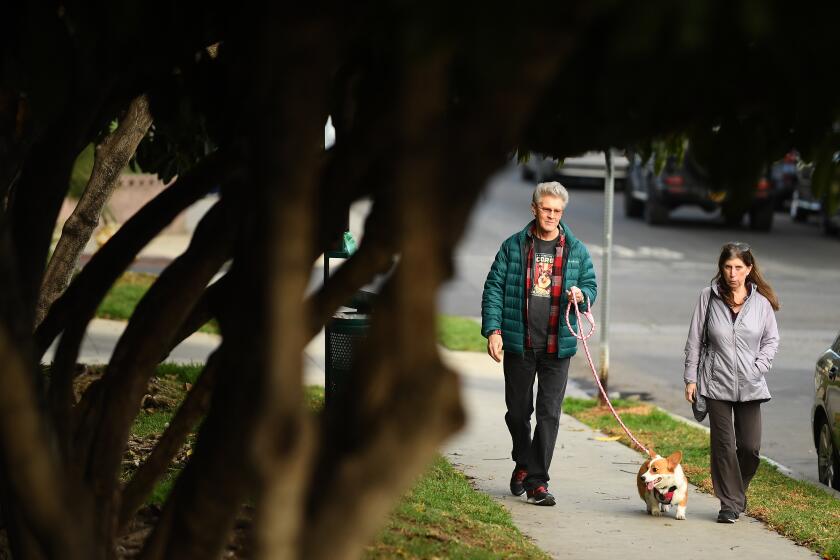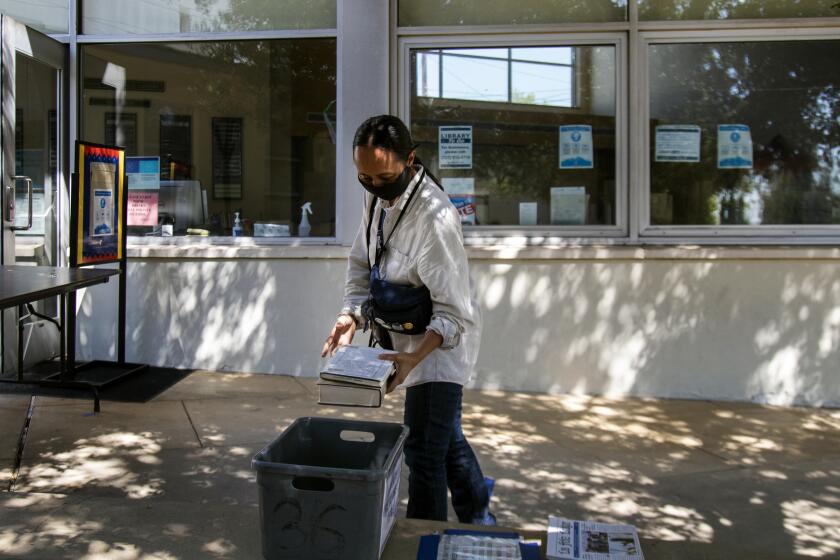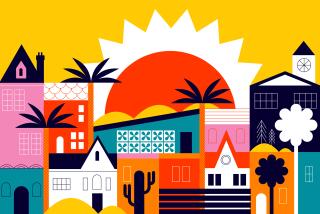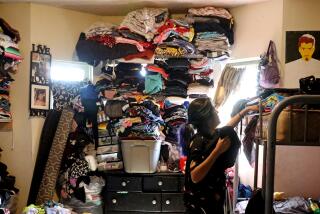- Share via
One day we will be on the other side of this terrible time, looking back.
One day we will be telling people about COVID-19, people who didn’t live through the fear of getting it or watch those they loved die from it or scramble to get shots to be safe from it or experience how it felt when it shut us inside and separated us from one another for months or took away our livelihoods or forced us to work and live in conditions suddenly perilous due to its daily threat.
One day we will be far enough away from it to start to digest and try to make sense of this strange time out of time, when the coronavirus changed everything, but so much else also took place.
Even now, sometimes it’s hard to remember all that has happened in L.A. since the virus upended our lives last March. Distance is sure to make remembering patchier.
So preserving a rich record of daily life in the pandemic as we are living through it is essential groundwork for that future, much-longed-for looking-back time.
That’s why the Los Angeles Public Library early on asked us to help by digitally submitting materials — photos, letters, emails, journal pages, blog posts and art — that together can tell the complex story of pandemic L.A.
What was launched as the Safer at Home Archive became the L.A. COVID-19 Community Archive as the months passed and the first name grew too narrow to contain the breadth of our collective experience.
The library’s archive, which grows daily, already includes more than 2,000 submissions. But it needs the participation of all sorts of people from all sorts of backgrounds from all over L.A. to build a collection as diverse as our city.
So please consider what follows my attempt to get you thinking about your own experiences and making plans to share whatever you determine tells your particular story best.
This week, thanks to a very generous and patient librarian, I spent hours on Zoom poring through the already cataloged offerings — sometimes laughing, sometimes tearing up, often finding my memory jogged. Remember the ominous wildfire skies in September? They’d slipped my mind in the blur of it all until I saw an image, all red, with a dim sun’s dull glare flaring out, star-shaped, in the corner.
A photo of staffers, in scrubs and white doctor’s coats, gathered outside Los Angeles County-USC Medical Center to mark the minutes that Minneapolis Police Officer Derek Chauvin pressed his knee into George Floyd’s neck made me gasp all over again at the horror of late last May, when we all watched that killing on video.
Suzanne Im oversees the archive as acting senior librarian of the library’s digitization and special collections department. Like many of us, she and the other librarians focused on the project are working from their homes — and Im’s dog sometimes barked, impatient to go outside, as we lost track of time letting the memories of this last year wash over us.
A man with a PhD lost his six-figure job and became homeless. He asked strangers to foster his dog. When his story was told, help poured in and gave him what he needed to get back on his feet.
Remember the early days full of can-do spirit and hope, when some of us began chalking encouragement on our sidewalks and pasting paper hearts in our windows, and we reveled in what we thought would be the short-lived wonder of a quieter metropolis?
We looked at many photos documenting that time — with accompanying descriptions that often stressed absence. Look, no cars on the streets. No people on the sidewalks. No traffic on the 101.
We saw parents with children in their arms gazing out at this new world from the windows of their houses and apartments, a family cycling in the middle of a gloriously empty residential street in Leimert Park. We entered the Valley Village living room of Barbara and David Motz, posed cheerfully in front of their fireplace, holding up signs. “Feeling grateful that: We are not too old to learn new skills...,” read his, while hers itemized said new skills, which included “Preparing meals with food at hand,” “Recipes for hand sanitizers,” “Being more patient.”
We reminisced about the initial panic that things we couldn’t live without would disappear as we looked at a photo taken by Lance Quach Tran, a worker at Costco in Northridge, who said he’d witnessed fights over toilet paper and water. The image he shared showed a man standing in line in the packed store, his extra-large, flatbed handcart loaded four stories high with 16 mega-packs of toilet paper.
We smiled as we saw the many submissions of people showing off their growing mask collections or documenting how they mobilized to sew masks for others, and at the seasonal menu on the wall of a Pasadena coffee shop that listed rubber gloves and sanitizer between oat milk and white peppermint mocha.
And we remembered the loneliness that set in as the first wave of survivalist preparation wore off and — with businesses shuttered and schools closed and people getting sick and dying and fear growing — our lives began to feel ever more uncomfortably constricted and confined.
We could feel it as we looked at the scene photographer Jon Dragonette captured of an all-but-deserted Olvera Street, with its rainbow of stalls — red, yellow, blue, mint green — closed, and two men in cowboy hats sharing a meal at a small outdoor table.
And at the photo that Jenny Januszewski took of her young son as he rode his bike in late March — just him and his shadow in a deserted church parking lot in Sherman Oaks. “This is a photograph of my son playing in solitary,” she wrote. “This was taken a week after he had made his first real friend at a playground.”
A lot of parents, by the way, have sent in photos of their children or their children’s drawings. We laughed at one photo of a boy “so filled with pent-up energy” he was “literally climbing the walls of his home,” propping himself off the ground with one foot on each wall of a hallway. We enjoyed the wanted poster for a jagged-tooth coronavirus drawn by 5-year-old Shelby Potts, whose mother, Mary McCoy, said that after in-person education was shut down in March, Shelby “began reading books about pathogens and plagues. Over the past two months, he has drawn over 100 pictures of different pathogens and says that he wants to be a vaccine researcher when he grows up.”
But we also saw the toll that isolation has taken on the young, particularly in self-portraits by teenagers. One drew herself in a mask, in tears, under the misspelled word “Quarentine.” Another paired her happy public face with her much more fragile private one.
The Los Angeles Public Library’s buildings remain COVID-closed. But in the pandemic, librarians’ creativity has blossomed online and many new doors for patrons have opened.
Walls closing in are a frequent theme in submissions.
“Oh friend, oh friend / Why won’t my message send? / All I want is to talk to you / I just want a clue if you feel the same way too,” starts a poem by Lucia Grajales, who wrote in the description that it was about not seeing other people for so long. “Everyone in Los Angeles is like a family. And now when we do see each other, it feels like 6 feet is like miles away.”
Betsy Rosenthal of Pacific Palisades sent in a limerick she displayed on her front lawn: “There once was a Palisades gal / Who was stuck in the same old locale. / So she scrubbed the house clean, / Did Zoom classes on screen / And went out every night just to howl!”
When I started reading an ongoing email conversation between two Encino neighbors who no longer risked talking in person, I found that simple fact unexpectedly moving.
I was moved too, though less surprisingly, by submissions focused on hardship and need.
Farida Waquar’s Instagram post shows an empty room. She said she could no longer afford her apartment, the first she’d had without roommates. “This is the final scene of the life I was leaving behind,” she wrote.
Lucia Tran of Los Feliz sent a photo she’d taken of a card she’d written, with gift cards enclosed. She said she’d raised $1,600 when she learned that her neighbor from Bolivia was undocumented so could not receive unemployment benefits. “Those who are most hurt can be … just doors away,” she wrote.
What I’ve told you about here merely skims the surface of what’s been gathered. Now I’d like to encourage you to help fill in some gaps. The archive is heavy on the early days, when the library first put out word that it was looking for submissions. It needs more from the Black Lives Matter protests last summer. It needs much more of the hardest stuff — of life in crowded residences and treacherous workplaces, in the ERs and in the nursing homes. It needs more stories of the sick and the dying and the grieving. It needs you in South L.A. and you in East L.A. and you in Beverly Hills and you in Reseda.
To tell the story of L.A. in the way it should be told, it needs all of us — all races, all backgrounds, all living through this time apart and together.
More to Read
Sign up for Essential California
The most important California stories and recommendations in your inbox every morning.
You may occasionally receive promotional content from the Los Angeles Times.
















